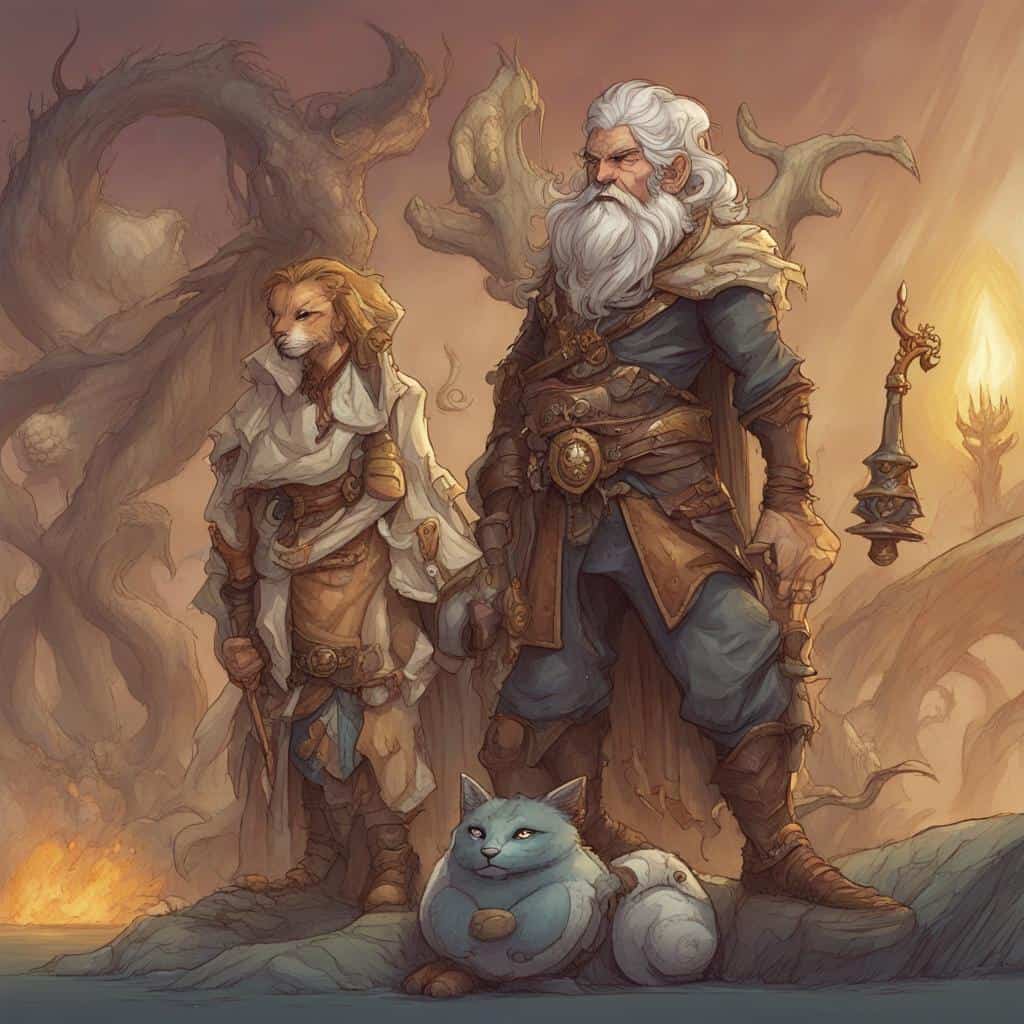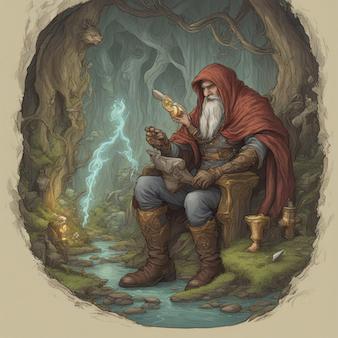Creating a fantasy protagonist that readers will connect with, root for, and remember long after the book is finished is one of the most critical elements of writing a successful fantasy novel. It’s the character that drives the plot, engages the reader emotionally, and brings the story to life. But how do you go about creating a memorable fantasy protagonist? In this article, we’ll discuss tips and tricks to help you craft a character that readers will never forget.
Crafting a Memorable Fantasy Protagonist

Give your protagonist a unique backstory.
Every memorable protagonist has a unique backstory that sets them apart from others. It could be a traumatic event, an unusual upbringing, or a distinct personality trait that defines them. By giving your protagonist a unique backstory, you can create a more compelling character that readers will want to learn more about.
For example, consider Harry Potter, whose backstory included the traumatic event of losing his parents, being raised by his neglectful aunt and uncle, and discovering that he is a wizard. These experiences shaped his character and influenced his actions throughout the series.
Create a character arc.
A character arc is the transformation your protagonist undergoes throughout the story. Your protagonist should start in one place and end up in another, having learned important lessons and grown as a person. This transformation is what keeps readers invested in the character and makes the story satisfying.
For instance, in The Lord of the Rings, Frodo Baggins starts as a naive hobbit who doesn’t fully understand the danger he’s in. By the end of the story, he’s a changed person who has experienced loss and learned the value of sacrifice.
Give your protagonist strengths and weaknesses.
A protagonist who is perfect in every way can be difficult to relate to and can make the story feel flat. It’s essential to give your protagonist strengths and weaknesses to make them feel more realistic and human. These traits can help shape the character’s personality, motivations, and actions.
For instance, in The Hunger Games, Katniss Everdeen’s strengths include her hunting and survival skills, while her weaknesses include her difficulty with trust and her lack of social skills.
Create conflicts that are personal to the protagonist.
Creating conflicts that are personal to the protagonist can help readers connect with them emotionally. By making the conflict something that the protagonist cares about deeply, you can make the story more engaging and help readers empathize with the character.
For example, in The Name of the Wind, Kvothe’s conflict is personal, driven by his desire for revenge against the Chandrian who killed his family.
Develop a unique personality for your protagonist.
A unique personality can make your protagonist more memorable and interesting to readers. It’s essential to create a personality that fits with the story’s themes and genre while still being distinct and memorable.
For example, in The Lies of Locke Lamora, Locke Lamora’s personality is defined by his quick wit, his talent for deception, and his loyalty to his friends.
Create complex relationships.
Relationships can be an essential part of a memorable protagonist’s story. Creating complex relationships between the protagonist and other characters can help the reader better understand the character’s motivations, actions, and personality.
For instance, in A Song of Ice and Fire, the complex relationships between the characters are what drive the story forward and make the protagonists feel more realistic.
Give your protagonist clear goals and motivations.
Giving your protagonist clear goals and motivations can help drive the story forward and give the character a purpose. This purpose can help readers understand why the character is making certain decisions and taking certain actions.
For instance, in The Wheel of Time, Rand al’Thor’s goal is to defeat the Dark One and save the world, which drives his actions throughout the series.
Create flaws that the protagonist needs to overcome.
A protagonist who faces internal struggles that they need to overcome can make for an engaging story. By giving the character flaws, you can create a sense of vulnerability and a relatable character that readers will root for. The protagonist’s flaws should be something that they can work to overcome or grow from, providing a sense of growth and development throughout the story.
For instance, in Mistborn, Vin struggles with trust issues and her identity as a Mistborn. Through her journey, she learns to trust others and embrace her identity, making her a more complex and relatable character.
Use sensory details to enhance the protagonist’s experiences.
Including sensory details can help readers visualize the character’s experiences and connect with the protagonist on a deeper level. Describing the character’s surroundings, emotions, and physical sensations can help bring the story to life and make the protagonist’s experiences more vivid.
For example, in The Name of the Wind, Patrick Rothfuss uses vivid sensory details to describe Kvothe’s music performances, making the reader feel as if they are experiencing the music themselves.
Give the protagonist a unique voice.
The way the protagonist speaks, thinks, and interacts with the world can create a unique and memorable voice for the character. Developing a unique voice can help the character stand out and create a more distinct personality.
For instance, in The Dresden Files, Harry Dresden’s witty humor and distinctive voice are a defining characteristic of the character.
Creating a memorable fantasy protagonist takes time and effort, but the payoff can be tremendous. By giving your protagonist a unique backstory, creating a character arc, giving strengths and weaknesses, creating conflicts, developing a unique personality, creating complex relationships, giving clear goals and motivations, creating flaws to overcome, using sensory details, and giving the protagonist a unique voice, you can craft a character that readers will never forget.
Keywords: Fantasy, Protagonist, Backstory, Character Arc, Strengths and Weaknesses, Conflicts, Personality, Relationships, Goals and Motivations, Flaws, Sensory Details, Voice, fantasy protagonist, meorable fantasy protagonist, crafting a fantasy protagonist, fantasy protagonist in novels, fantasy protagonist tips, writing a fantasy protagonist, creating a fantasy protagonist
Check out our Novel Writing Workbooks
Check out Little Tree Food Forest for articles on food forests and homesteading.
Check out FoodieScapes for articles on growing, fermenting and preserving food
Check out StoryScapes.World for articles on writing.
Subscribe to our newsletter to get information delivered to your inbox on how to write a book, outlining your novel, keeping journals, marketing your novel, self-publishing, writing poetry and more.










